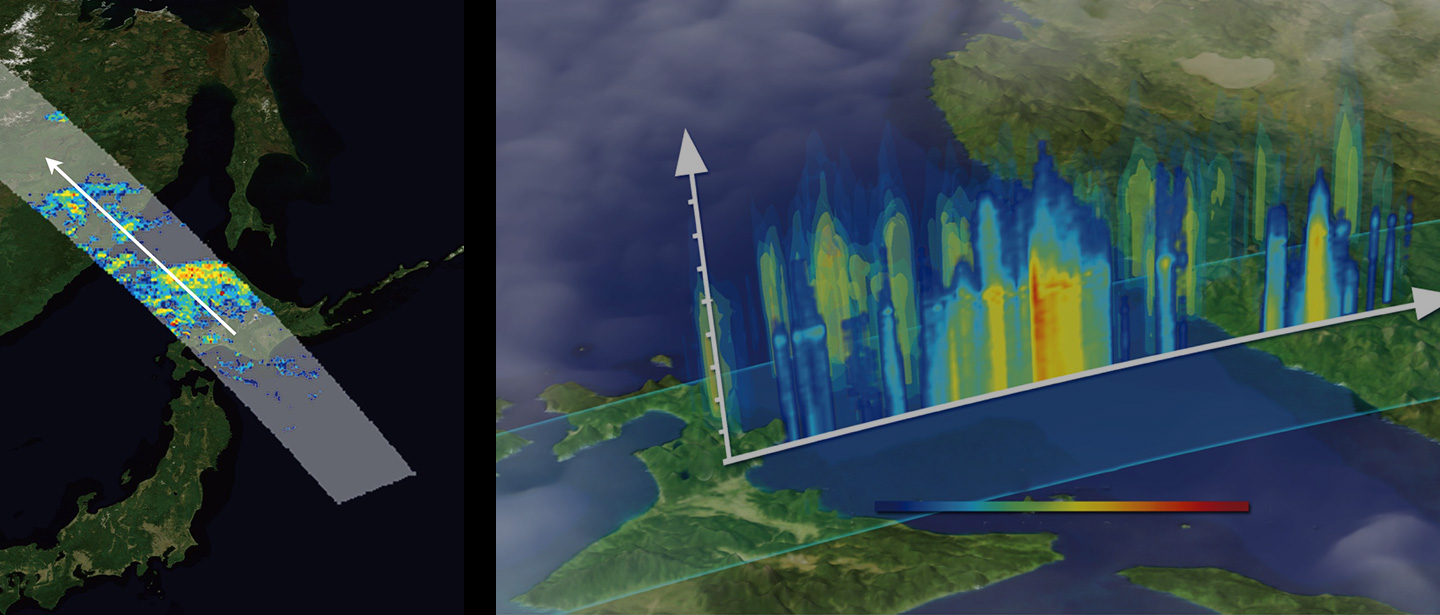Under the Paris Agreement, each party is required to prepare and submit a national inventory report of greenhouse gas emissions calculated from statistical data. The data from satellites, which can measure the entire Earth uniformly, is expected to play a role as scientific evidence to improve the accuracy of the inventory report.
In 2009, Japan’s Ministry of the Environment, JAXA, and the National Institute for Environmental Studies (NIES) jointly developed the Greenhouse Gases Observing SATellite “IBUKI” (GOSAT), the world’s first satellite dedicated to greenhouse gas monitoring. In 2018, we launched the GOSAT-2, which improved the observation accuracy of GOSAT. Currently both satellites are still observing.
JAXA have established cooperative relationships with the National Aeronautics and Space Administration (NASA), the European Space Agency (ESA), the Centre National d’Etudes Spatiales (CNES) and the German Aerospace Center (DLR) having a plan to launch and operate a greenhouse gas observation satellite in Europe, and the European Organisation for the Exploitation of Meteorological Satellites (EUMETSAT). We have provided the latest knowledge based on space-based greenhouse gas observation data at various conferences, including the Conference of the Parties (COP) to the United Nations Framework Convention on Climate Change (UNFCCC).
The Paris Agreement, adopted at the 21st Conference of the Parties to the United Nations Framework Convention on Climate Change (UNFCCC COP21) in December 2015 and entered into force in November 2016, is a new international framework for greenhouse gas reductions in the post-2020 period. The long-term goal of the framework is to “keep the increase in global average temperature well below 2 degrees Celsius above pre-industrial levels and strive to limit it to 1.5 degrees Celsius,” and the mechanism for all countries to submit and update their reduction targets every five years is defined.
In the past, ground-based observations were the main method for monitoring greenhouse gas concentrations. However currently it became possible to monitor from both the ground and space by the regular operation of satellites such as GOSAT. Ground-based observations have the advantage of being able to monitor regional characteristics in detail, while satellite observations have the advantage of being able to measure the concentration of greenhouse gases uniformly across the entire Earth. Since satellites measure the entire Earth with a single sensor, they can make spatially uniform measurements without being affected by differences in measurement equipment or methods.
In 2019, the 49th General Assembly of the Intergovernmental Panel on Climate Change (IPCC) in Kyoto, Japan adopted the refined guidelines to prepare and submit the inventory report of emissions. (“2019 Refinement to the 2006 IPCC Guidelines for National Greenhouse Gas Inventories”), and the role of satellite observation data was defined as one of the tools to verify the accuracy of the national inventory report.

















